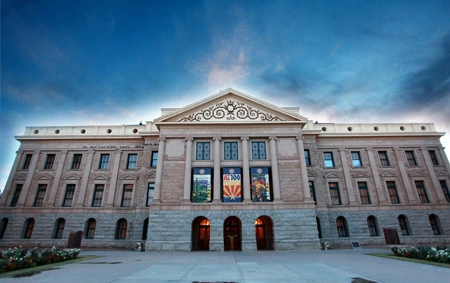
Budgetary worries don’t exclude water deliberations
Although attention at the Capitol has focused on budget matters, some bills important to water management are making their way through the legislative process. Their final approval will be evidence that good things can be accomplished even during very tough budgetary times. (Note: At the time of writing, approval of most of these bills was still pending. Bills can be tracked on-line at The Legislature’s web site).
HB 2088 establishes a Well Administration and Enforcement Fund at the Arizona Department of Water Resources. Fees for filing a notice of intent to drill a well or obtaining a permit, where required, to drill a well would increase in all areas of the state, although the House and Senate had yet to concur on the amount of the increase. The Senate version increases the fee to $150 in Active Management Areas and Irrigation Non-Expansion Areas and increases it to $100 elsewhere.
This legislation is important to provide increased revenues to ADWR, enabling the agency to carry out its mandated responsibilities more effectively. The revenues would go into a special account at ADWR to fund “compliance monitoring, investigation and enforcement activities of the department pertaining to the construction, replacement, deepening and abandonment of wells and capping of open wells.” Because of budget cuts, ADWR has had to cut back significantly on its well safety monitoring program. Unlike the revenues for most fees, which are deposited to the general fund, these funds would be appropriated to ADWR. Because this bill involves a fee increase, a two-thirds majority of each house must approve it.
Another important bill would require the Central Arizona Replenishment District to establish a replenishment reserve. Membership in the CAGRD enables those requesting a certificate or designation of assured water supply from ADWR to establish sufficient utilization of renewable water supplies. The CAGRD operates in the Phoenix, Pinal and Tucson AMAs. Because the CAGRD does not have long-term, secure water supplies, storing water in years when excess CAP water is available for meeting future replenishment obligations is prudent. Water available to the CAGRD is expected to become more expensive over time. In fact, it could be argued that, absent long-term contracts for CAP water, the CAGRD will incur water costs significantly above that paid by CAP subcontractors. Draw down of the replenishment reserve will help avoid rate shock for CAGRD members. The bill also extends the CAGRD’s planning horizon from 20 to 100 years. Every 10 years, the CAGRD must prepare a plan, subject to approval by the ADWR director. Approval of the plan is very important; it enables CAGRD members to show their continued compliance with the assured water supply rules.
It will be interesting to see how this planning requirement is implemented. It is one thing for the CAGRD to estimate its replenishment obligation for 100 years; it is quite another for the CAGRD to indicate how it expects to meet that replenishment obligation over that time. In addition, the bill allows a member service area (water provider) to de-enroll from the CAGRD if it can establish it is able to meet the assured water supply requirements on its own.
HB 2478 mandates that ADWR provide a water resources status report every two years. This report is to present important information including: (a) the current status of the state’s water supply and any likely changes in it; (b) issues of regional and local drought effects, short-term and long-term drought management efforts and the adequacy of drought preparation throughout the state; (c) the status of current water conservation programs; (d) the current state of each AMA and their levels of progress toward management goals; (e) issues affecting management of the Colorado River and the reliability of Arizona’s 2.8 million acre-foot allocation of river water, including the status of issues related to the Colorado River basin states and Mexico; (f) the status of any pending or likely litigation regarding surface water adjudications or other water related litigation and the potential impacts on water supplies; (g) the status of Indian water rights settlements; and (h) other matters related to the reliability of water supplies, and the adequacy of the department’s and other entities’ resources to meet the state’s water management needs. The bill has been amended to include session law language authorizing emergency transfer of groundwater between basins during drought, under a limited set of circumstances.
A testament to compromise is HB 2480, the only bill of those listed that is ready to be transmitted to Governor Napolitano for signature. The bill allows the formation of multijurisdictional water facilities districts. Many conditions must be satisfied prior to forming a district, especially in cases involving a private water company. While issuance of revenue bonds is authorized for a district formed pursuant to this bill, issuance of general obligation bonds is not. The latter source of financing was quite controversial during the Governor’s Water Management Commission deliberations. This authority has been considered important by water providers who need to join together to finance water infrastructure projects.
The bills discussed are consistent with recommendations that were included in the Final Report of the GWMC. Their implementation was considered important for furthering good water management in the AMAs. In addition, there are several bills addressing water quality matters, and a bill authorizing Yuma basin groundwater transfer (SB 1248) may make its way through the process.
All in all, at this point in time, it’s not been such a bad year for water legislation!
Photo: Gage Skidmore - https://www.flickr.com/photos/gageskidmore/14072240860/

